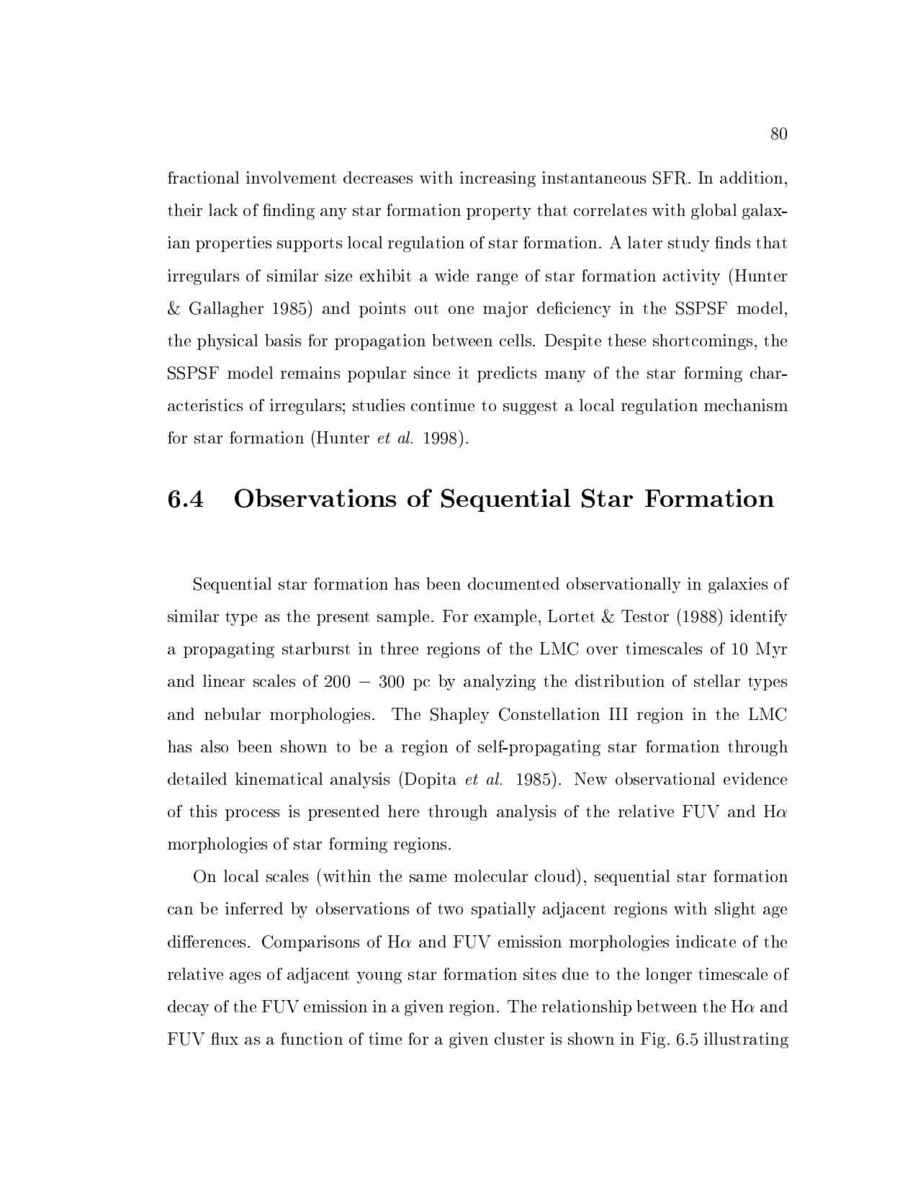Astronomical Applications Department, U.S. Naval Observatory thesis Page 94

80
fractional involvement decreases with increasing instantaneous SFR. In addition,
their lack of nding any star formation property that correlates with global galax-
ian properties supports local regulation of star formation. A later study nds that
irregulars of similar size exhibit a wide range of star formation activity Hunter
& Gallagher 1985 and points out one major de ciency in the SSPSF model,
the physical basis for propagation between cells. Despite these shortcomings, the
SSPSF model remains popular since it predicts many of the star forming char-
acteristics of irregulars; studies continue to suggest a local regulation mechanism
for star formation Hunter
et
al.
1998.
6.4 Observations of Sequential Star Formation
Sequential star formation has been documented observationally in galaxies of
similar type as the present sample. For example, Lortet & Testor 1988 identify
a propagating starburst in three regions of the LMC over timescales of 10 Myr
and linear scales of 200
,
300 pc by analyzing the distribution of stellar types
and nebular morphologies. The Shapley Constellation III region in the LMC
has also been shown to be a region of self-propagating star formation through
detailed kinematical analysis Dopita
et
al.
1985. New observational evidence
of this process is presented here through analysis of the relative FUV and H
morphologies of star forming regions.
On local scales within the same molecular cloud, sequential star formation
can be inferred by observations of two spatially adjacent regions with slight age
di erences. Comparisons of H and FUV emission morphologies indicate of the
relative ages of adjacent young star formation sites due to the longer timescale of
decay of the FUV emission in a given region. The relationship between the H and
FUV ux as a function of time for a given cluster is shown in Fig. 6.5 illustrating
